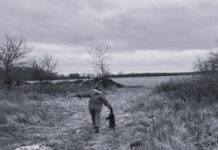If you’ve read your fill of thrillers and mysteries this summer, here are a few nonfiction titles to get you into fall.
Two years ago, I wrote about an ecological disaster unfolding on Rat Island in the Bering Sea between Siberia and Alaska. Rats descended from those shipwrecked hundreds of years earlier had decimated the island’s population of ground nesting sea birds.
It was a story that deserved much more than a single newspaper column. Book publishers abhor a vacuum, and thus Rat Island: Predators in Paradise and the World’s Greatest Wildlife Rescue by William Stoltzenburg ($26, Bloomsbury, 2011) was born.
Good read
In 2009, Stotzenburg published Where the Wild Things Were, the best popular treatment of the importance of predators I’ve ever read.
So when I got my hands on Rat Island, I knew I was in for a treat. I was not disappointed. Islands make up just 5 percent of the planet’s land area, but are home to more than half of its endangered species.
Island species evolved in isolation, typically with few predators. When rats, cats, goats, hogs, and other invasive species were introduced to these islands, they wreaked ecological havoc either by directly killing island species or by destroying habitat.
Root for seabirds
Along the way you’ll meet birds you probably didn’t know existed. You’ll root for seabirds such as ancient murrelets and New Zealand’s flightless parrot, the kakapo.
Rat Island tells how conservationists use poisons, snipers and retired poachers to eradicate island invaders. Some call it “radical conservation.” I call it “a reason for hope.”
Food for thought. After reading Tomatoland: How Modern Industrial Agriculture Destroyed Our Most Alluring Fruit, by Barry Estabrook ($19.99, Andrews McMeel, 2011), I told my wife I’ll never buy another off-season tomato in a grocery store again. (That’s sure to put a dent in the $5 billion domestic tomato industry.)
You’ll learn the fascinating origins of tomatoes in the high deserts of the South American Andes Mountains. Those ancestors looked nothing like the tomatoes we buy/raise today. Some ancestral tomatoes were the size of peas.
And learning the human and environmental toll associated with growing tomatoes in Florida today, where most are grown, is both shocking and tragic.
The horrors begin with modern day slave labor in central Florida and continue until you bite into a bland, tasteless, nutrient-deprived, chemical-laden, supermarket tomato in January. Never again.
Excellent intro
The Atlas of Birds: Diversity, Behavior, and Conservation by Mike Unwin ($22.95, Princeton University Press, 2011) is only 144 pages, but it’s an excellent introduction to the diversity and conservation of birds around the world. You’ll learn where and how birds live, how they are classified, the threats they face and how they interact with people.
If you enjoy birds, beautiful color photos, and easy-to-understand maps, The Atlas of Birds is for you. 1493: Uncovering the New World Columbus Created by Charles Mann ($30.50, Knopf, 2011) is a fascinating account of what the New World became after Columbus’ first visit to the Americas.
Though primarily a history, 1493 traces the importance of ecological forces that shaped human culture. Potatoes, tobacco, guano, rubber plants, sugar cane, and malaria all played prominent roles. 1493 is the perfect follow-up to 1491: New Revelations of the America Before Columbus (2005), Mann’s earlier work in which he described the New World before Columbus’ arrival.
Using new discoveries and the findings of many scientists and researchers, Mann sets the conventional history of the New World on its ear. Despite the impression left by recent books such as The Dangerous World of Butterflies by Peter Laufer (2009) and Winged Obsession (2011) by Jessica Speart, butterflies are not the only invertebrates sought by unscrupulous collectors and criminals.
Geoducks
Shell Games: Rogues, Smugglers and the Hunt for Nature’s Bounty, by Craig Welch ($25.99, Harper Collins, 2010) looks at the lucrative and dangerous world of black market dealings in geoduck clams in the Pacific northwest’s Puget Sound.
Increasingly popular as gourmet food, geoducks drive scuba diving poachers to deadly competition. Given the topic, Shell Games reads like fiction, but author Welch is the award-winning chief environmental writer for the Seattle Times. Thank goodness for journalists like Laufer, Spear and Welch reporting these stories.










